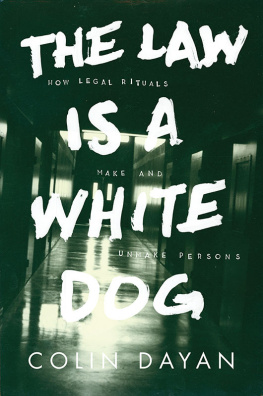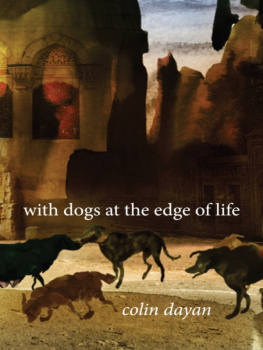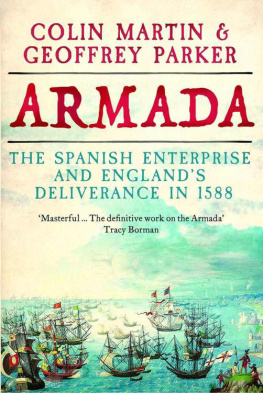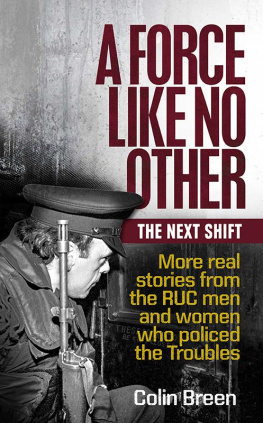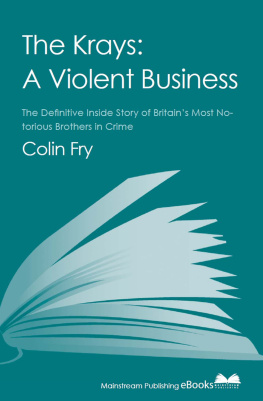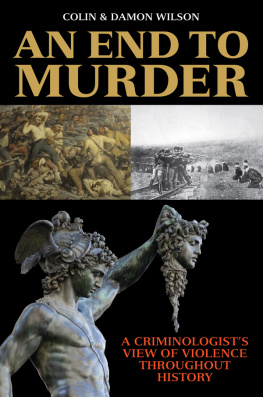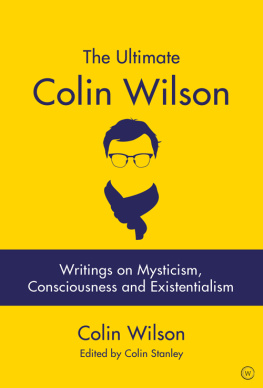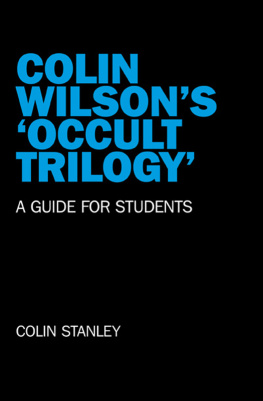Colin Dayan - The Law is a White Dog
Here you can read online Colin Dayan - The Law is a White Dog full text of the book (entire story) in english for free. Download pdf and epub, get meaning, cover and reviews about this ebook. year: 2011, publisher: Princeton University Press, genre: Romance novel. Description of the work, (preface) as well as reviews are available. Best literature library LitArk.com created for fans of good reading and offers a wide selection of genres:
Romance novel
Science fiction
Adventure
Detective
Science
History
Home and family
Prose
Art
Politics
Computer
Non-fiction
Religion
Business
Children
Humor
Choose a favorite category and find really read worthwhile books. Enjoy immersion in the world of imagination, feel the emotions of the characters or learn something new for yourself, make an fascinating discovery.
- Book:The Law is a White Dog
- Author:
- Publisher:Princeton University Press
- Genre:
- Year:2011
- Rating:4 / 5
- Favourites:Add to favourites
- Your mark:
- 80
- 1
- 2
- 3
- 4
- 5
The Law is a White Dog: summary, description and annotation
We offer to read an annotation, description, summary or preface (depends on what the author of the book "The Law is a White Dog" wrote himself). If you haven't found the necessary information about the book — write in the comments, we will try to find it.
The Law is a White Dog — read online for free the complete book (whole text) full work
Below is the text of the book, divided by pages. System saving the place of the last page read, allows you to conveniently read the book "The Law is a White Dog" online for free, without having to search again every time where you left off. Put a bookmark, and you can go to the page where you finished reading at any time.
Font size:
Interval:
Bookmark:
THE LAW IS A WHITE DOG
HOW LEGAL RITUALS
MAKE AND
UNMAKE PERSONS

IS A
WHITE
DOG
COLIN DAYAN
Copyright 2011 by Princeton University Press
Published by Princeton University Press, 41 William Street, Princeton, New Jersey 08540
In the United Kingdom: Princeton University Press, 6 Oxford Street, Woodstock,
Oxfordshire OX20 1TW
press.princeton.edu
All Rights Reserved
Fourth printing, and first paperback printing, 2013
Paperback ISBN 978-0-691-15787-0
The Library of Congress has cataloged the cloth edition of this book as follows
Dayan, Joan
The law is a white dog : how legal rituals make and unmake persons / Colin Dayan.
p. cm.
Includes bibliographical references and index.
ISBN 978-0-691-07091-9 (cloth : alk. paper) 1. Persons (Law)United States. 2. SlaveryLaw and legislationUnited States. 3. TortureUnited States. 4. Civil rightsUnited States. 5. LawUnited StatesSocial aspects. I. Title.
KF465.D39 2011 | |
346.73012dc22 | 2010027474 |
British Library Cataloging-in-Publication Data is available
This book has been composed in Berling
Printed on acid-free paper.
Printed in the United States of America
10 9 8 7 6 5 4
For David, again
... dogs believe in thieves and ghosts
Nietzsche, Thus Spoke Zarathustra
THIS IS A BOOK ABOUT EXTRANEOUS PERSONS. SUBORDINATED AND expelled from society, they take on new shapes: humans, things, dogs, and spirits that are brought together under the umbrella of legal history. Their transformations prompt us to think about what it means to be considered in terms of law. I offer some broad perspectives on metamorphosis, invoking only some of the manifold ways that law dwells on, messes with, and consumes persons. It is through law that persons, variously figured, gain or lose definition, become victims of prejudice or inheritors of privilege. And once outside the valuable discriminations of personhood, their claims become inconsequential.
Law is the protagonist of this plot. The social, economic, and even spiritual practices of remote times persist in legal forms and pronouncements. My treatment of ghostly properties and human and nonhuman animal materials appeals for an understanding of legal reality, lively, ever-present, and reimagined by those outside the guild of lawyers. I see my task as unearthing what Sir Frederick Maitland described as the dry bones of law and giving them life in unexpected places. For some readers, it will seem that I make legal effects revel in what is least akin to judicial activities and the operations of law. But the generous reader will, I reckon, follow me on the journey through a series of haunts, sites that recapitulate, if fitfully, the transmutations that are so much a part of legal history.
I seek to know what happens to conventional historical and legal sources when they are pressed to answer unconventional questions. But my main objective is to ask how law encapsulates, sustains, and invigorates philosophies of personhood. What I offer as idioms of servility demonstrate, I wish to suggest, that state-sanctioned degradation in America is propelled by a focus on personal identity, the terms by which personality is recognized, threatened, or removed. I treat the legal history of dispossession as a continuum along which bodies and spirits are remade over time. In this narrative I devote special attention to the obscene made lawful: slavery, torture, indefinite solitary confinement, preventive detention. Along the way I show how rituals considered otherworldly, primitive, irrational, and superseded maintain their presence in what we consider our truly civil and modern society.
The irrational haunts the civilizing claims of the reasonable. The shadows of the Furies, buried so that the polis could be born, still pursue the icons of order. So the modern state, its counterfeits and its terrors, betrays a subterranean legacy. Each chapter here explores a different site of incapacitation through what I think of as sinkholes of law where precedents gather, festering as they feed on juridical words, past and present. The animating principle of such an account of law is a challenge to chronology. Entwined and cumulative, these chapters proceed as episodes in making and unmaking persons.
In the long history of what I call negative personhood, I focus on slaves, animals, criminals, and detainees who are disabled by law. Legal thought relied on a set of fictions that rendered the meaning of persons shifting and tentative: whether in creating slaves as persons in law and criminals as dead in law, or in the perpetual re-creation of the rightless entity. The medieval fiction of civil death lives on in the present. The felon rendered dead in law is no anachronism but a continuing effect of dehumanizing practices of punishment. What does it mean to exist in a negative relation to law? In my attempt to characterize legal disabilities, I analyze competing genealogies of race prejudice, as well as traditions of penality that transform persons into cadavers. Rituals of old world vengeance like the deodand, corruption of blood and civil death jostle with a philosopher of personal identity like John Locke, a critic of the common law like Jeremy Bentham, as well as dogs and ghosts, demons and zombies, judges and poets who bear witness to undying legal effects.
What I aim to do in this book is to question the spirit of law. In each chapter I try to lay a foundation for this questioning by bringing together different disciplines and modes of inquiry. Both the organization and the irresolution resulting from it are deliberate. While dramatizing a perplexing legal history too often lost in linearity, I preserve a discontinuous but thematically linked approach to the questions I raise. I want to make readers complicit in a world without demarcations such as those between past and present, primitive and civilized. For the oppressed and outlawed, such distinctions matter but they matter differently. They are more seamless and easily convertible. For those who adhere to a myth of progress or faith in reason, the continuum between past and present must be made to be deeply felt.
I choose not to spare my readers the experience of lingering phantoms that guarantee a politics that is both rigorous and visible, what Peter Geshiere calls the modernity of witchcraft. The dispossession accomplished by slavery, as I have argued elsewhere, became the model for possession in vodou: turning a person not into a thing but into a spirit, filled with thought, armed with personality. In Creole, lwa is the term for both law and god. Those dispossessed by the loi dtat when possessed by their lwa communicate across species boundaries, breaking down and challenging legal taxonomies. So the white dog of my title is invested with ambiguous power.
Disabilities are made indelible through time in fictions of law, law words that wield the power to transform. I will argue that residues of terror are never really dead and gone but, through the terms of law, survive and always find new bodies to inhabit, new persons to target. I try to show how the ghosts of Enlightenment past become the demons of modernity. I also suggest how what we call supernatural or think of as ghostly is really quite natural, corporeal, easily recast as reasonable.
The spiritually injured entities I describe as depersonalized
Next pageFont size:
Interval:
Bookmark:
Similar books «The Law is a White Dog»
Look at similar books to The Law is a White Dog. We have selected literature similar in name and meaning in the hope of providing readers with more options to find new, interesting, not yet read works.
Discussion, reviews of the book The Law is a White Dog and just readers' own opinions. Leave your comments, write what you think about the work, its meaning or the main characters. Specify what exactly you liked and what you didn't like, and why you think so.

